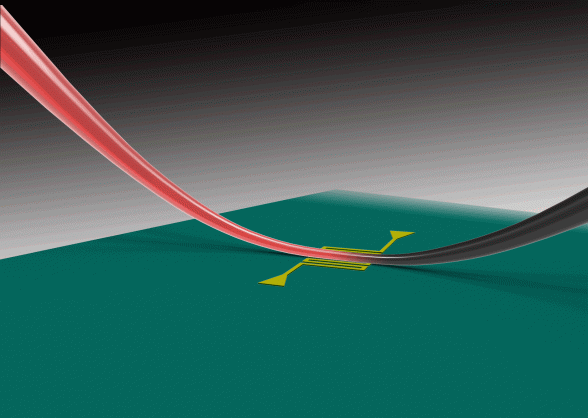Significance
Single-photon detectors of high-performance superconducting nanowires have been used in numerous applications, particularly in quantum communications and modern quantum optics because of their high detection efficiency, broadband sensitivity, low fluctuation of timing and low dark count rate. Currently there are two types of optical coupling methods for high-performance superconducting nanowire single-photon detectors (SNSPDs), one of they, produces high-performance SNSPDs coupled to fiber, where the fibers vertically illuminate the meandered nanowires. The other type is the one that produces high-performance SNSPDs coupled to waveguides.
A group of researchers led by professor Lixing You at the Shanghai Institute of Microsystem and Information Technology, Chinese Academy of Sciences developed a new type of high-performance SNSPDs that are combined with a microfiber. They showed the characteristics of both high efficiency and broadband, after the optimization of the SNSPDs coupled to microfiber, which allows to use this type of detectors, in different novel applications, such as micro / nanofiber optics. The research work is now published in Optics Express.
The general process carried out by the research group began with fabrication of the high-performance superconducting nanowire single-photon detectors in niobium nitride films, the films were modeled in a meandered nanowire as the active area of SNSPD. A microfiber of 1.3 μm in diameter was manufactured from a standard optical fiber. A nitrogen gas chamber was also designed to meet the requirements of the curing of the low refractive index adhesive amd the process of coupling was done inside the camera.
From the previous process, it was determined that the mode with dominant components of the horizontal electric field parallel to the narrow had a better optical confinement. On the other hand, it was determined that the temperature variation of the adhesive of low refractive index, presents an approximate optical loss 300 times greater than the observed loss at room temperature, therefore it had to be changed to a larger microfiber diameter (2 μm) in order to reduce the optical loss at low temperature of said detector. Finally, the authors succeessfully demonstrated an SNSPD coupled with the microfiber with SDEs of 22.5%/50% at wavelengths of 1550 nm/1064 nm.
The authors suggested that the SDE of the type of detector can be further improved by increasing the absorbance values of the nanowire microfibers. Besides, these detectors may exhibit ultra-band capability.

Reference
Lixing You , Junjie Wu, Yingxin Xu, Xintong Hou,Wei Fang, Hao Li, Weijun Zhang, Lu Zhang, Xiaoyu Liu, Limin Tong, Zhen Wang, and Xiaiming Xie. Microfiber-coupled superconducting nanowire single-photon detector for near-infrared wavelengths . Optics Express Vol. 25, Issue 25, pp. 31221-31229 (2017)
Go To Optics Express
 Advances in Engineering Advances in Engineering features breaking research judged by Advances in Engineering advisory team to be of key importance in the Engineering field. Papers are selected from over 10,000 published each week from most peer reviewed journals.
Advances in Engineering Advances in Engineering features breaking research judged by Advances in Engineering advisory team to be of key importance in the Engineering field. Papers are selected from over 10,000 published each week from most peer reviewed journals.


